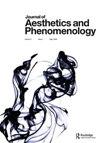Future Imaginings in Art and Artificial Intelligence
IF 0.2
0 PHILOSOPHY
引用次数: 0
Abstract
ABSTRACT In considering future imaginings of art and Artificial Intelligence (AI), we point out two key premises to our approach: the human-machine relation without opposition between the two terms; and the implications of artificial intelligence within practice-led art practices. According to Gilbert Simondon, there is a biological and technological evolution that does not separate nature and technics or culture and technics, since what is defined by human nature is already part of a technological system. Yuk Hui criticizes the idea of technological singularity supported by strong artificial intelligence which converges on itself. However, there is also the possibility of multiple bifurcations emerging from technodiverse practices and aesthetics. On algorithmic art, Lev Manovich points out that AI is increasingly culturally influencing our imagination, choices, and behaviours and that it has built its own imagery and cognitive patterns in society. Joanna Zylinska connects the dots between AI, creativity and innovation, which by bringing AI to research into practice-led art practices, opens the problematization of AI to the possibilities of reprogramming the human sensory-cognitive apparatus. In this paper, we extend these approaches to examine whether these computer systems that enable the processing of big data can or cannot program our imagination, desires, likes, sensations, perceptions and attitudes. Finally, in order to think the worlds built through these emerging AI technologies, we ask what kind of society we want to live in, and what roles we will allow ubiquitous computational technologies, such as AI, to play in our daily lives.艺术与人工智能的未来想象
摘要在考虑艺术和人工智能的未来想象时,我们指出了我们方法的两个关键前提:人机关系,而这两个术语之间没有对立;以及人工智能在以实践为导向的艺术实践中的含义。Gilbert Simondon认为,生物和技术进化并没有将自然与技术或文化与技术分开,因为人性定义的东西已经是技术系统的一部分。余晖批评了由强大的人工智能支持的技术奇点的观点,人工智能本身就收敛了。然而,技术多样化的实践和美学也有可能出现多重分歧。关于算法艺术,Lev Manovich指出,人工智能在文化上越来越影响我们的想象力、选择和行为,它在社会中建立了自己的形象和认知模式。Joanna Zylinska将人工智能、创造力和创新联系在一起,通过将人工智能带入以实践为导向的艺术实践的研究,为人工智能的问题化打开了重新编程人类感官认知装置的可能性。在本文中,我们扩展了这些方法,以检验这些能够处理大数据的计算机系统是否能够或不能对我们的想象力、欲望、喜好、感觉、感知和态度进行编程。最后,为了思考通过这些新兴的人工智能技术构建的世界,我们问我们想生活在什么样的社会中,以及我们将允许无处不在的计算技术,如人工智能,在我们的日常生活中发挥什么作用。
本文章由计算机程序翻译,如有差异,请以英文原文为准。
求助全文
约1分钟内获得全文
求助全文

 求助内容:
求助内容: 应助结果提醒方式:
应助结果提醒方式:


